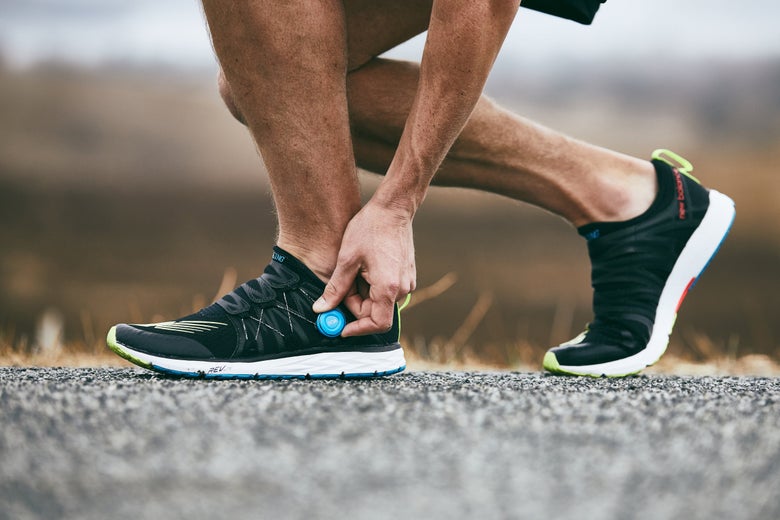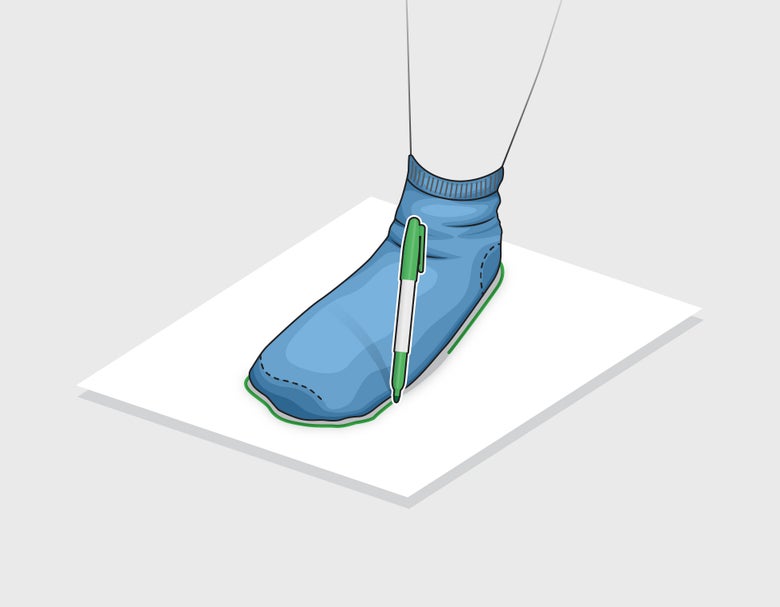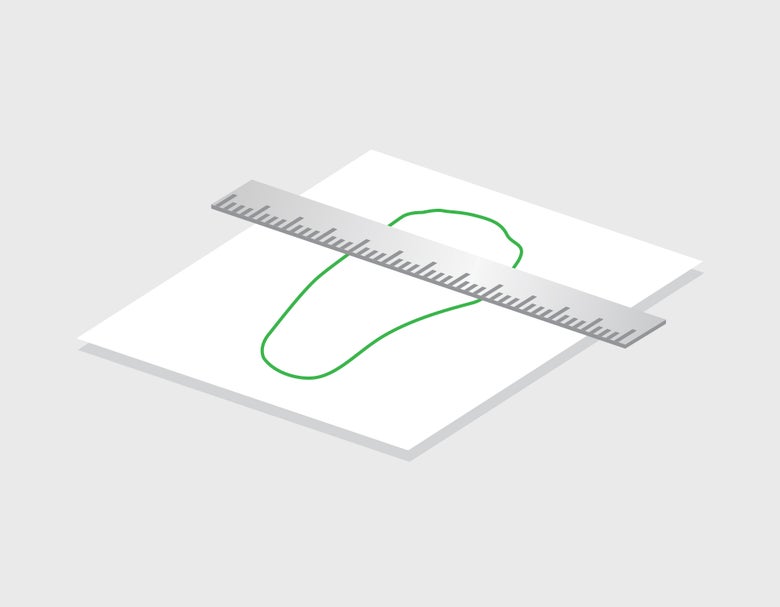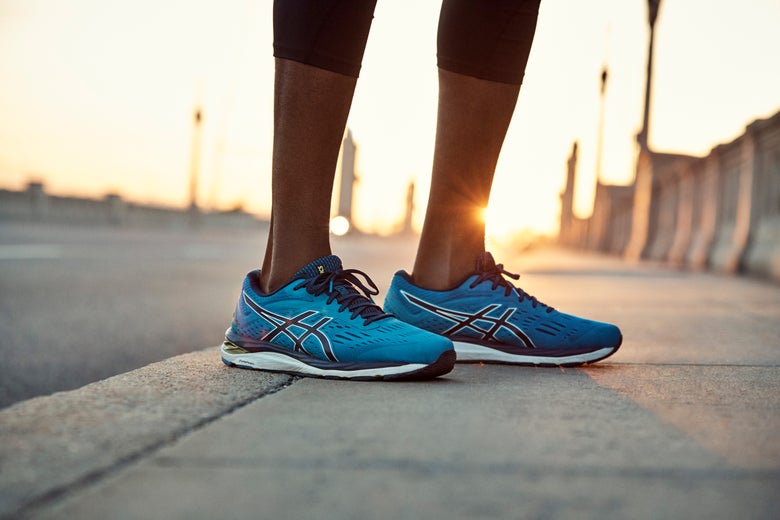How to Find Your Running Shoe Size and Fit
A Properly Fitting Shoe is the Key to a Comfortable Run

Finding the right shoe size is essential to successful running and training. To get the right fit, it's important to start with your foot measurement. Once you have that information, just match it with a shoe size and start running in comfort! You'll be amazed by how big of a difference a perfect fit can make.
Foot Size
You will need: a piece of paper or cardboard larger than your foot, a tape measure or ruler, and a pen.
Step 1
Find a hard, flat surface and place the piece of paper on the floor.
Step 2
Wear socks that are similar to what you plan to wear when running. Stand with one foot on the paper.
Step 3
Keeping your body weight over your foot, trace a thin line around the outside of your entire foot. When drawing the line, hold the pen perpendicular to the ground.

Step 4
Measure vertically down the length of your foot tracing. This is your foot length.

Step 5
Measure horizontally across the widest part of your foot tracing. This is your foot width.

Step 6
Repeat these steps for your other foot, and use the larger foot measurements when determining your running shoe size. In the next section you will learn how to use a conversion chart to get your shoe size from your foot measurements.
Shoe Size

While running, your feet lengthen and widen as they make contact with the ground, but return to their normal size as they reach mid-air. Because of this, we recommend that you choose a running shoe that's a half size longer than your measured size. If you have measured your foot on a Brannock Device (in-store measuring tool), the half size larger rule still applies. This means your standard running shoe size is typically a half size longer than your standard casual shoe. Once you have measured your foot length, match it with our Sizing Conversion Charts.
Women's Sizing Conversion Chart
Your running shoe width is based on your shoe size and width measurement. To determine the ideal shoe width, match your foot measurements with our Width Conversion Charts.
Shoe Fit
- A properly fitting running shoe should feel snug in the heel and midfoot, with wiggle room around the toes.
- While standing, check for proper length and width by pressing your thumb down next to the ball of your foot and around the toes. A good fit should allow for half to a full thumb's width of space.
- Next, hold the back of the shoe and try to raise your heel. There should be little to no movement.
- Lastly, check the eyelet rows on either side of the tongue. These rows should be close to parallel with each other.
More Tips for Properly Fitting Running Shoes
| Measure your feet each year, as they can change sizeas you age | For example, the foot arch may lower over time, resulting in a longer foot, or a stronger foot may cause the arch to rise, resulting in a shorter size. Weight changes and activity level can also influence foot size. |
|---|---|
| Women's feet may become larger during and after pregnancy | Weight gain during pregnancy may cause permanent lowering of the foot arch resulting in a longer foot. |
| Your standard running shoe size is typically a half size larger than your casual shoes | In general, running in shoes that are a tad too large is preferable to running in shoes that are too small. |
| Fit your larger foot | Your left foot and your right foot may differ by as much as a full size. A shoe that is too small is more likely to cause issues than one that is too big. |
| Faster running means you want a snugger fit | A tighter fit means you'll stay better connected to the shoes when picking up the pace, so it might be worth giving up some wiggle room for a more secure fit. Many racing and performance shoes have a tighter overall fit than everyday training shoes. |
| Sock thickness can affect shoe fit, so try on shoes with the socks you plan to wear | You can change the thickness of your sock to fine-tune your fit. For example, use a thinner sock to create more space or a thicker sock to make the fit snugger. |
| Different lacing techniques can also affect fit | For more information, watch the video below. |
How Lacing Techniques Can Affect Your Shoe Fit
Didn't Get It Right?
At Running Warehouse Europe we want you to be happy with your purchase, and we understand new shoes don't always work out; that's why we have a great return policy. If you have any questions, please don't hesitate to contact us at information@runningwarehouse.eu or call our Customer Service at +44 (0) 845 834 1052
